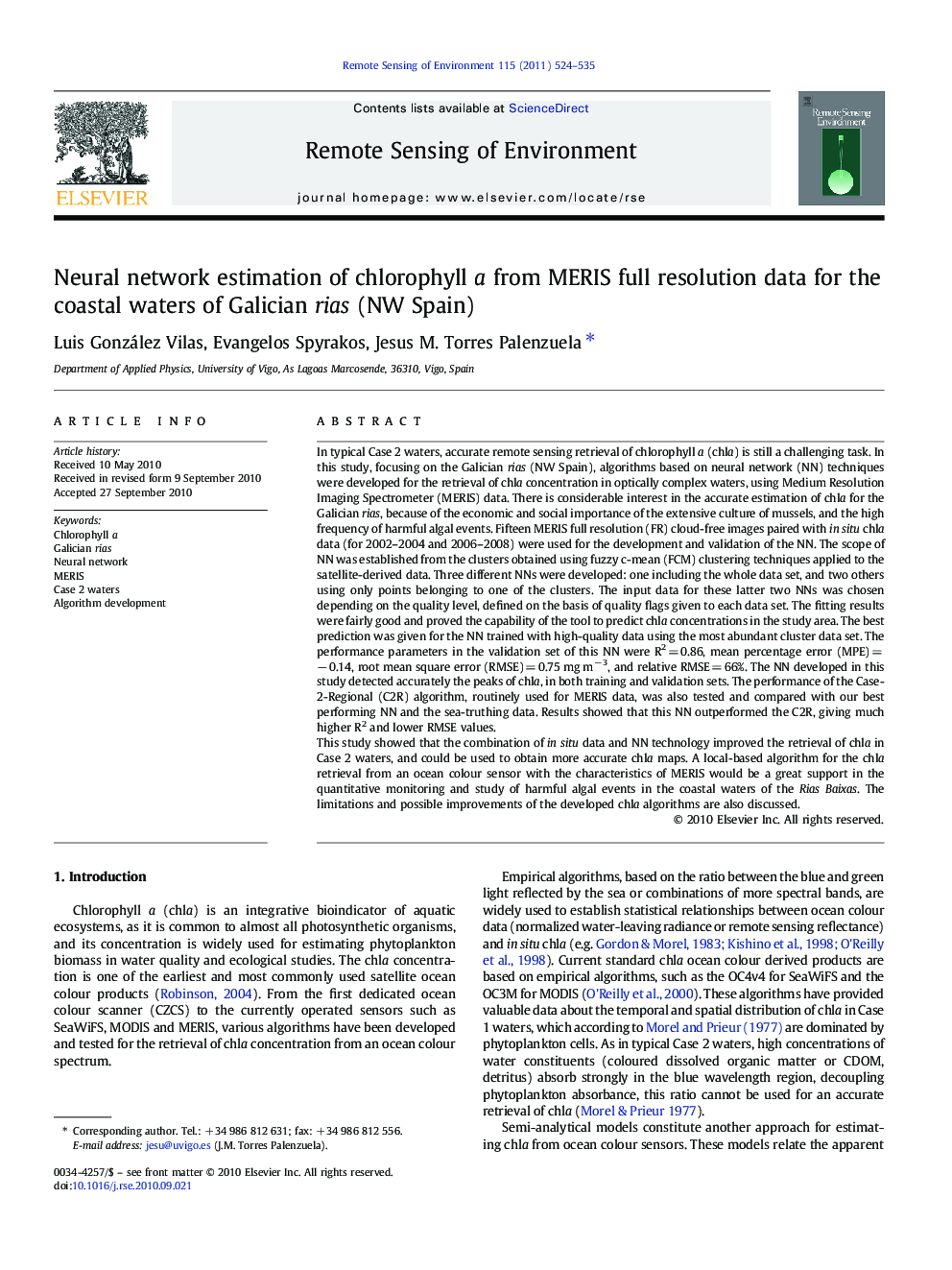| Article ID | Journal | Published Year | Pages | File Type |
|---|---|---|---|---|
| 4459654 | Remote Sensing of Environment | 2011 | 12 Pages |
In typical Case 2 waters, accurate remote sensing retrieval of chlorophyll a (chla) is still a challenging task. In this study, focusing on the Galician rias (ΝW Spain), algorithms based on neural network (NN) techniques were developed for the retrieval of chla concentration in optically complex waters, using Medium Resolution Imaging Spectrometer (MERIS) data. There is considerable interest in the accurate estimation of chla for the Galician rias, because of the economic and social importance of the extensive culture of mussels, and the high frequency of harmful algal events. Fifteen MERIS full resolution (FR) cloud-free images paired with in situ chla data (for 2002–2004 and 2006–2008) were used for the development and validation of the NN. The scope of NN was established from the clusters obtained using fuzzy c-mean (FCM) clustering techniques applied to the satellite-derived data. Three different NNs were developed: one including the whole data set, and two others using only points belonging to one of the clusters. The input data for these latter two NNs was chosen depending on the quality level, defined on the basis of quality flags given to each data set. The fitting results were fairly good and proved the capability of the tool to predict chla concentrations in the study area. The best prediction was given for the NN trained with high-quality data using the most abundant cluster data set. The performance parameters in the validation set of this NN were R2 = 0.86, mean percentage error (MPE) = − 0.14, root mean square error (RMSE) = 0.75 mg m− 3, and relative RMSE = 66%. The NN developed in this study detected accurately the peaks of chla, in both training and validation sets. The performance of the Case-2-Regional (C2R) algorithm, routinely used for MERIS data, was also tested and compared with our best performing NN and the sea-truthing data. Results showed that this NN outperformed the C2R, giving much higher R2 and lower RMSE values.This study showed that the combination of in situ data and NN technology improved the retrieval of chla in Case 2 waters, and could be used to obtain more accurate chla maps. A local-based algorithm for the chla retrieval from an ocean colour sensor with the characteristics of MERIS would be a great support in the quantitative monitoring and study of harmful algal events in the coastal waters of the Rias Baixas. The limitations and possible improvements of the developed chla algorithms are also discussed.
Research Highlights►Regionally specific models for chlorophyll a estimation from MERIS were developed. ►Fuzzy c-mean clustering techniques detected 3 clusters of MERIS radiance. ►The developed neural networks improved the retrieval of chlorophyll a in the area. ►The proposed approach could be used to obtain more accurate chlorophyll a maps.
